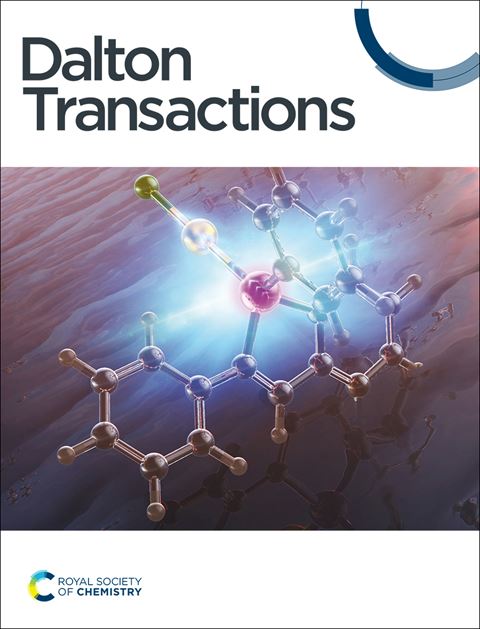氢化物亲和性和局部亲电性之间的联系:设计可逆H2活化的受挫路易斯对的关键因素
IF 3.5
3区 化学
Q2 CHEMISTRY, INORGANIC & NUCLEAR
引用次数: 0
摘要
我们利用密度泛函理论计算了27个分子内氨基硼烷受挫刘易斯对(FLPs)的氢化物亲和性和凝聚到硼的亲电性指数之间的明确关系。首先,研究了吉布斯自由能变化对H2分裂对FLPs氢化物亲和力的依赖性,确定了芳香族和脂肪族氮取代基之间的强线性相关性。此外,我们发现在所有FLP体系中,缩合到硼的亲电性指数的倒数和对数与氢化物亲和度呈强烈的线性关系,这在纯理论反应性指数与实验性质(如氢化物亲和度)之间产生了直接联系。利用这些模型,我们将我们的发现应用于实验测试的FLP系统,预测H2分裂产生∆G的氢化物亲和值分别为-0.2和0.9 kcal/mol,分别呈反比和对数关系,与实验值-1.7±4.0 kcal/mol非常接近。这些结果证实了我们的模型的预测能力,可用于指导合理设计新的氨基硼烷FLPs,用于不饱和化合物的可逆H2活化和无金属加氢。本文章由计算机程序翻译,如有差异,请以英文原文为准。
The connection between Hydride Affinity and Local Electrophilicity: A key factor in designing frustrated Lewis pairs for reversible H2 activation
We present a clear relationship between hydride affinity and the condensed-to-boron electrophilicity index for 27 intramolecular aminoborane frustrated Lewis pairs (FLPs), employing Density Functional Theory calculations. First, the Gibbs free energy change's dependence of H2 splitting on the hydride affinity of the FLPs is explored, identifying strong linear correlations for aromatic and aliphatic nitrogen substituents. Additionally, we found that the condensed-to-boron electrophilicity index's inverse and logarithm show strong linear relationships with hydride affinity across all FLP systems, generating a direct connection between a purely theoretical reactivity index with an experimental property like the hydride affinity. Using these models, we applied our findings to an experimentally tested FLP system, predicting hydride affinity values that yield ∆G for H2 splitting of -0.2 and 0.9 kcal/mol with the inverse and logarithmic relationships, respectively, closely matching the experimental value of -1.7 ± 4.0 kcal/mol. These results confirm the predictive power of our models, which can be used to guide the rational design of new aminoborane FLPs to be employed in reversible H2 activation and metal-free hydrogenation of unsaturated compounds.
求助全文
通过发布文献求助,成功后即可免费获取论文全文。
去求助
来源期刊

Dalton Transactions
化学-无机化学与核化学
CiteScore
6.60
自引率
7.50%
发文量
1832
审稿时长
1.5 months
期刊介绍:
Dalton Transactions is a journal for all areas of inorganic chemistry, which encompasses the organometallic, bioinorganic and materials chemistry of the elements, with applications including synthesis, catalysis, energy conversion/storage, electrical devices and medicine. Dalton Transactions welcomes high-quality, original submissions in all of these areas and more, where the advancement of knowledge in inorganic chemistry is significant.
 求助内容:
求助内容: 应助结果提醒方式:
应助结果提醒方式:


